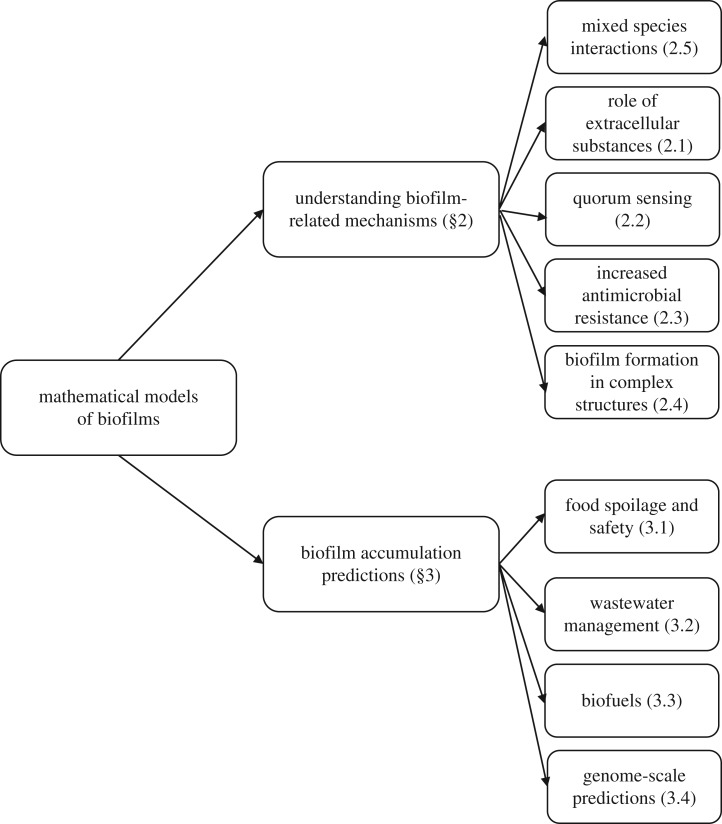Figure 1.
Schematic diagram of the review. The biofilm models are categorized according to their purpose. Firstly, models that aimed to understand various biofilm formation mechanisms are discussed. We give examples of how mathematical modelling explained some observed phenomena arising from mixed species interactions, extracellular substances, quorum sensing mechanism, apparent antimicrobial resistance of biofilms and biofilm formation in complex structures. Secondly, attention is turned to the second type of biofilm model, which aim to predict levels of biofilm accumulation. These models are generally specific to a given area of interest. We give examples of applications of these predictive models in the food industry, wastewater management and in engineering biofuels.

